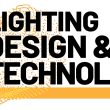When it comes to cinematic interview lighting, there are several key elements to consider. First and foremost, it’s essential to create a flattering and natural-looking light that enhances the subject’s features without being too harsh or overpowering.
One of the most important things to consider is the type of lighting you’re using. Softbox lights, for example, are great for creating a soft, even light that is easy on the eyes. On the other hand, sidelights can create a more dramatic and dynamic look.
Another key element to consider is the direction of the light. When the light is coming from directly in front of the subject, it can create a flat, two-dimensional look. By angling the light slightly, you can create a more three-dimensional effect.
It’s also important to consider the color temperature of the light. Warm white light, for example, can create a cozy and inviting atmosphere, while cool white light can create a more clinical and professional look.
Ultimately, the key to cinematic interview lighting is to create a look that is both flattering and natural-looking.
In addition to the type and direction of the light, it’s also important to consider the intensity of the light. A light that is too bright can be overwhelming and distracting, while a light that is too dim can be difficult to see.
By considering these factors and experimenting with different lighting setups, you can create a cinematic interview lighting look that is both professional and visually appealing.
Here are 7 simple steps to help you get started:
Step 1: Determine the purpose of the interview. Is it a formal, professional interview or a more casual, conversational one?
Step 2: Choose the right lighting equipment. Softbox lights, sidelights, and backlights are all great options for creating a cinematic look.
Step 3: Consider the color temperature of the light. Warm white light can create a cozy and inviting atmosphere, while cool white light can create a more clinical and professional look.
Step 4: Angle the light to create a more three-dimensional effect. This can be done by positioning the light slightly off-center or by using a light with a adjustable arm.
Step 5: Adjust the intensity of the light. A light that is too bright can be overwhelming and distracting, while a light that is too dim can be difficult to see.
Step 6: Experiment with different lighting setups. Try using a combination of softbox lights and sidelights to create a more dynamic look.
Step 7: Pay attention to the background. A plain white or gray background can help the subject stand out, while a busy or distracting background can detract from the interview.









